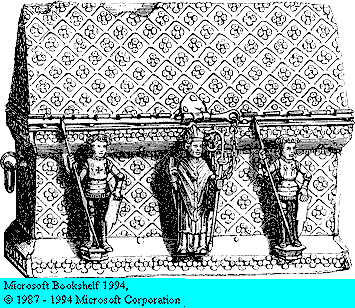Introduction Home Page Pilgrim Church Index
"This
is copyright material, reproduced by kind permission © The
Estate of Dora Broadbent 1999. For personal use only. Multiple copies
may not be taken without written permission".
The Book has been Republished - Click Here for Links.
Previous Page Risking their own lives by their refusal, they dropped the stones, but there was a young man present named Justus, who had been brought up by Constantine as his adopted son and treated with especial kindness; he flung a stone at his benefactor and killed him, thus earning high praise and reward from the authorities, who compared him to David slaying Goliath. Simeon was profoundly moved by all that he saw and heard at Kibossa, and, conversing with the Christians there, was convinced of the truth of their doctrines and the rightness of their practice.
Risking their own lives by their refusal, they dropped the stones, but there was a young man present named Justus, who had been brought up by Constantine as his adopted son and treated with especial kindness; he flung a stone at his benefactor and killed him, thus earning high praise and reward from the authorities, who compared him to David slaying Goliath. Simeon was profoundly moved by all that he saw and heard at Kibossa, and, conversing with the Christians there, was convinced of the truth of their doctrines and the rightness of their practice.
Returning to Constantinople, he could find no peace of soul at the court, and after three years of inward conflict, abandoned everything, escaped to Kibossa, and there, adopting the name of Titus, took up and continued the work of the man whom he had caused to be put to death. It was not long before he, too, joined the great company of martyrs, for, two years later, Justus, making use of his knowledge of the ways of the brethren, gave to the bishop-and he to the Emperor Justinian II-information which led to the capture of a large number of them.
Expecting to terrorise the rest of the "heretics" into submission, the Emperor had these, including Simeon, all burnt together at one time. The fortitude of the sufferers, however, defeated his plan, fanning the faith and courage of many into a flame of devotion and testimony, so that more preachers and teachers were raised up and the congregations increased. They endured affliction with courage, unresisting, until a time of respite came to them through circumstances which took place in the Catholic world.
Veneration of relics began at an early stage of the Church's history. Helena, the mother of Constantine the Great, brought from Jerusalem wood supposed to be part of the cross, and nails which she believed had been used at the crucifixion.
Pictures, images, and ikons began to be valued. Churches were built to receive relics or to commemorate the death of martyrs. Insensibly the meetings of the disciples of the Lord, in simple houses and rooms, changed to the gathering of all, willing or unwilling, believers or not, in consecrated buildings dedicated to the Virgin or one of the saints, filled with images, pictures, and relics, which became objects of worship.
Next Page
Introduction Home Page Pilgrim Church Index
 Risking their own lives by their refusal, they dropped the stones, but there was a young man present named Justus, who had been brought up by Constantine as his adopted son and treated with especial kindness; he flung a stone at his benefactor and killed him, thus earning high praise and reward from the authorities, who compared him to David slaying Goliath. Simeon was profoundly moved by all that he saw and heard at Kibossa, and, conversing with the Christians there, was convinced of the truth of their doctrines and the rightness of their practice.
Risking their own lives by their refusal, they dropped the stones, but there was a young man present named Justus, who had been brought up by Constantine as his adopted son and treated with especial kindness; he flung a stone at his benefactor and killed him, thus earning high praise and reward from the authorities, who compared him to David slaying Goliath. Simeon was profoundly moved by all that he saw and heard at Kibossa, and, conversing with the Christians there, was convinced of the truth of their doctrines and the rightness of their practice.